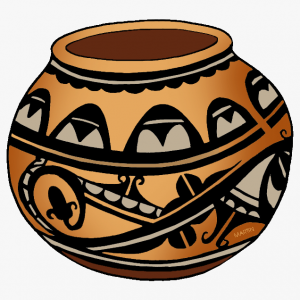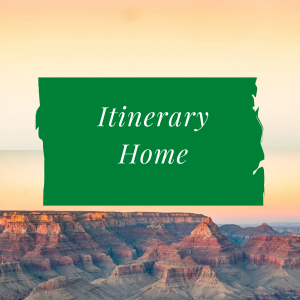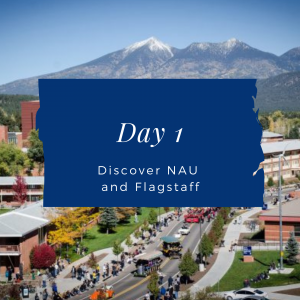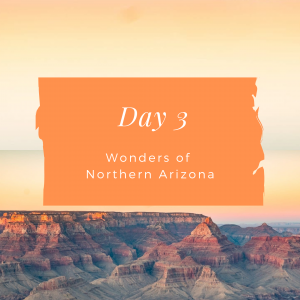Native landmarks and history
Virtual tour day 2
Today we are going to explore more of the surrounding area and spend some time learning about Native American culture and history.
We begin with NAU’s land acknowledgement. Land acknowledgements promote awareness of Indigenous history, presence, and land rights in everyday life. Land acknowledgements are often shared at the beginning of ceremonies, lectures, and education guides. Though limited, they are an explicit way to recognize the history of colonialism as well as a need for change in settler-colonial societies. In this context, we’re looking to acknowledge the existence of Indigenous bodies in geography and how they occupy land.
NAU’s land acknowledgement
Northern Arizona University sits at the base of the San Francisco Peaks, on homelands sacred to Native Americans throughout the region. We honor their past, present, and future generations, who have lived here for millennia and will forever call this place home.
The Navajo Nation

Flagstaff borders the Navajo Nation, the USA’s largest sovereign Tribal nation, which covers over 17.5 million acres and is home to Antelope Canyon, Monument Valley, Canyon de Chelly, and other iconic natural wonders.
The Navajo Nation borders Utah, Colorado, New Mexico, and Arizona. The Navajo Nation is the largest area of land that has been retained by Indigenous communities.
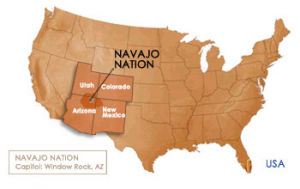
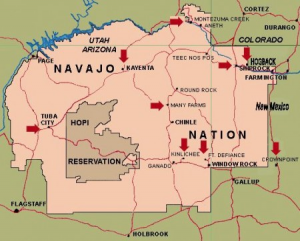
The Navajo Nation is larger in land area than 10 states in the US! The capital of the Navajo Nation is Window Rock and the current president is Buu Nygren.
The Hopi Tribe is another sovereign nation located in northeastern Arizona. The Hopi reservation encompasses more than 1.5 million acres, and is made up of 12 villages on three mesas.
Notable landmarks
Grand Falls – Approximately 45 minutes northeast of Flagstaff, you’ll find a natural waterfall system known as Grand Falls. It is also called “Chocolate Falls,” due to the color of the water from the Colorado River, and dumps rain and snowmelt into the Little Colorado River. At 185 feet (56 meters), these falls are higher than Niagara Falls in upstate New York. The best time to view Grand Falls is in the spring after the winter’s snowmelt has filled this lava dam.

The state of Arizona and the Hopi Nation do not observe Daylight Savings Time; however, the Navajo Nation in Arizona does observe Daylight Savings Time.
Few geological formations are as picturesque and awe-inspiring as Antelope Canyon, a magnificent slot canyon just east of Page in Northern Arizona. Nearby Horseshoe Bend is a U-shaped curve of the Colorado River. It is also referred to as the “east rim of the Grand Canyon.” Check it out!
Wupatki National Monument
Thirteen different Native American communities are traditionally associated with Wupatki. Rock walls of 800-year-old pueblos dot a desert landscape once home to thousands of people. Visitor center exhibits explain how they survived by farming, hunting and gathering, and trading. Short trails lead to Wupatki, Lomaki, and other pueblos.
The article “Living Connections to an Ancient Past at Wupatki National Monument” helps us to understand how communities not only lived, but thrived in this region.
Walnut Canyon
Tie your shoes and refill your water bottle; next we’re headed to Walnut Canyon National Monument! Retrace the steps of those before you while reading Arizona Adventures: Wandering the Cliffs of Walnut Canyon.
Walk among the cliff dwellings and pueblos where people lived 800 years ago. Experience the dramatic geology, varied vegetation, and wildlife that made their lives possible. Visitor center exhibits explain their daily lives. The strenuous one-mile Island Trail descends into Walnut Canyon while the shorter Rim Trail offers overlooks and a pithouse display.
Sunset Crater Volcano
Born in a dramatic series of eruptions only 900 years ago, Sunset Crater is still the youngest volcano on the Colorado Plateau. Visitor center exhibits explain the powerful geologic forces and their aftermath. See for yourself on the one-mile, self-guided Lava Flow Trail, and check out these 360 views of the Sunset Crater Volcano.
Museum of Northern Arizona (MNA)
With the San Francisco Peaks as its backdrop, and just minutes from historic downtown, MNA shows visitors the inspiration coming from the Colorado Plateau region, Indigenous Native American tribes, and the interpretation of Northern Arizona’s natural and cultural heritage. Revolving exhibits highlight artists, stories of living on tribal land, the dinosaurs that roamed here. The museum is also host to the annual Hopi, Navajo, and Zuni summer festivals.
Check out this amazing exhibit!
The HOPI R2 droid combines art and technology to teach about Hopi culture. In many ways, the droid is the ideal mascot for the exhibition it was built for: “The Force Is With Our People” at the Museum of Northern Arizona. The HOPI R2 involves a blending of traditional pottery motifs and contemporary technology; a balance of ancient cultures and futuristic ideas. It is a collaboration between a Hopi artist and an electrical engineer from New Jersey.
Design your own pottery and upload it to Instagram! Tag us with #NAUINTL
Back to Flagstaff for the night
Let’s end day two back in downtown Flagstaff, enjoying some of the nighttime festivities!
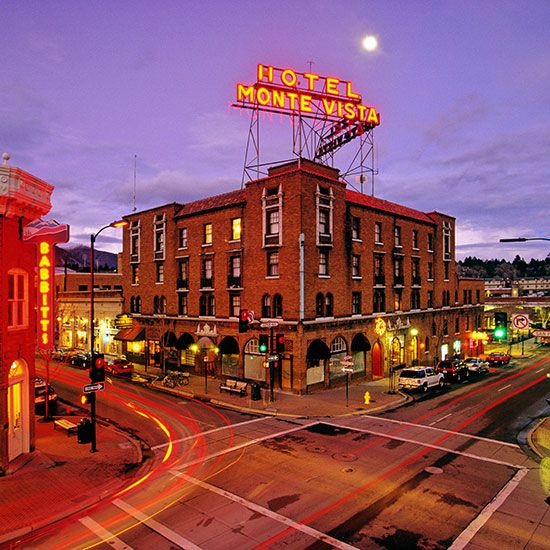
Time to get some shut-eye in the historic Hotel Monte Vista. We look forward to showing you more tomorrow as our tour continues with the Grand Canyon, Snowbowl, and Lowell Observatory.



